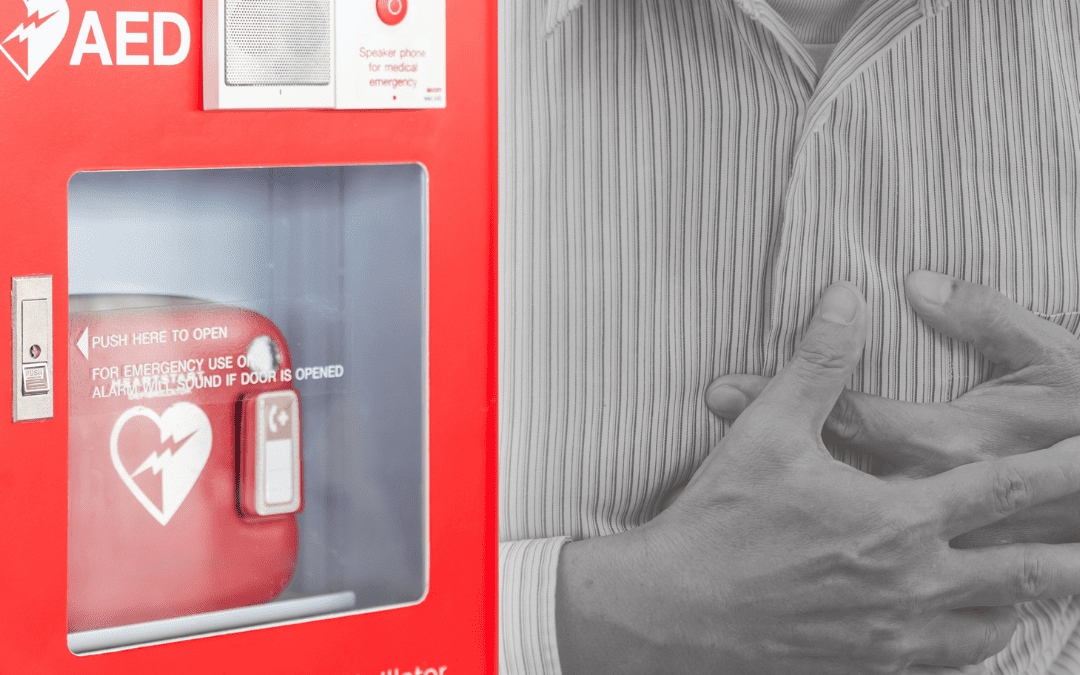
The five places where AEDs are most needed in the UK
The Department of Education’s rollout of 20,000 defibrillators to state-funded schools across England has begun as part of the government’s plans to ensure there is a life-saving device in every school by June 2023. But what about other public spaces where an Automated External Defibrillator (AED) might be beneficial?
AEDs are portable devices that can be used to restore a normal heart rhythm in the event of sudden cardiac arrest. They’re a vital tool in saving lives during cardiac emergencies. But should they be compulsory? Currently, there’s no legislation in the UK that obliges businesses or premises to provide a defibrillator. However, there can be liability in negligence for failing to take appropriate safety precautions.
So, while it’s not a legal requirement, there is a duty of care for businesses and organisations to provide a safe environment for employees, customers, and members of the public. Sudden cardiac arrest can happen to anyone, anywhere, at any time. That’s why it’s important to have AEDs on hand to help. We think these five places are where defibrillators are most needed in the UK…
AEDs at schools
In 2022, the government committed to installing a defibrillator at every school following a dedicated campaign by the Oliver King Foundation to make defibrillators mandatory at schools. The foundation’s founder, Mark King, tragically lost his son, Oliver, at the age of 12 to a sudden cardiac arrest while competing in a swimming race in 2011.
Although rare, children and young adults can suffer from cardiac arrest and defibrillators have the potential to save the lives of pupils, staff, and school visitors when they’re readily available. As the education secretary, James Cleverly, said:
“The evidence clearly shows that defibrillators drastically increase the chance of survival from a cardiac arrest, and it’s particularly important that they are available close to sports halls and playing fields that children, young people and the wider community use on a daily basis.”
AEDs at airports
Airports are another place where AEDs are needed in the UK. Research shows that accessing a defibrillator within 3-5 minutes of a cardiac arrest increases the chance of survival by over 40%. Air travel is a common mode of transport for many people, and the stress and exertion associated with travel can put people at risk for cardiac arrest.
Additionally, many airports have a large number of elderly travellers, who are at a higher risk of experiencing cardiac emergencies. Cardiac arrest is a leading cause of death worldwide, and statistics have shown that the chances of survival decrease by 10% for every minute that passes without intervention. Having an AED readily available in airports can help save lives and provide peace of mind to passengers and staff.
AEDs at shopping malls
Shopping malls are another place where defibrillators would be beneficial. They’re often crowded, with a high number of visitors, staff, and elderly shoppers. Cardiac arrests can happen to anyone, and having an AED readily available can make all the difference. In the UK alone, there are more than 30,000 out-of-hospital cardiac arrests every year.
Shopping malls also often have large stores, restaurants, and other amenities, which means that the time it takes for emergency services to arrive on the scene can be longer. Having a defibrillator on hand can help increase the chances of survival for someone experiencing a cardiac arrest – quick intervention is key.
AEDs at sports facilities
Sports facilities are another place where AEDs could make a real difference. Physical activity can put people at risk for cardiac arrest, and sports facilities often have a high number of visitors, including athletes and spectators. Some sports, such as football or rugby, also have a higher risk of cardiac arrest due to the physical nature of the sport.
A publicly-accessible defibrillator can help save lives and provide peace of mind to athletes and spectators alike.
AEDs at home
Finally, having an AED at home can also make a huge difference in the event of a cardiac arrest. According to the British Heart Foundation, survival rates for out-of-hospital cardiac arrests are shockingly low – only one in 10 people survive.
Having an AED on hand can help increase the chances of survival. Additionally, having an AED at home can be especially important for individuals with a history of heart disease or other cardiac conditions.
The difference a defibrillator makes
Sudden cardiac arrest occurs when the heart suddenly stops beating, and it can be fatal if not treated quickly. An AED can be used to shock the heart back into a regular rhythm, and can potentially save thousands of lives every year if installed in public spaces like airports, train stations, shopping centres, and sports facilities.
Time is of the essence – the quicker a defibrillator can be applied to restore a normal heart rhythm, the better the person’s chances of survival. AEDs are designed to be easy to use, even for people with no medical training. They provide clear prompts to guide the user through the process of delivering a shock, and many also have built-in CPR guidance.
This means that members of the public can use them in the event of an emergency, potentially saving someone’s life while waiting for emergency services to arrive. In a cardiac emergency, every minute counts and having a defibrillator nearby could be the difference between life and death. Sudden cardiac arrest can happen anywhere, whether you’re at home, work, or out in public. Wouldn’t you feel better knowing these five places were equipped with defibrillators if the worst were to happen? At the end of the day, AEDs are needed in public spaces because they have the potential to save lives.
